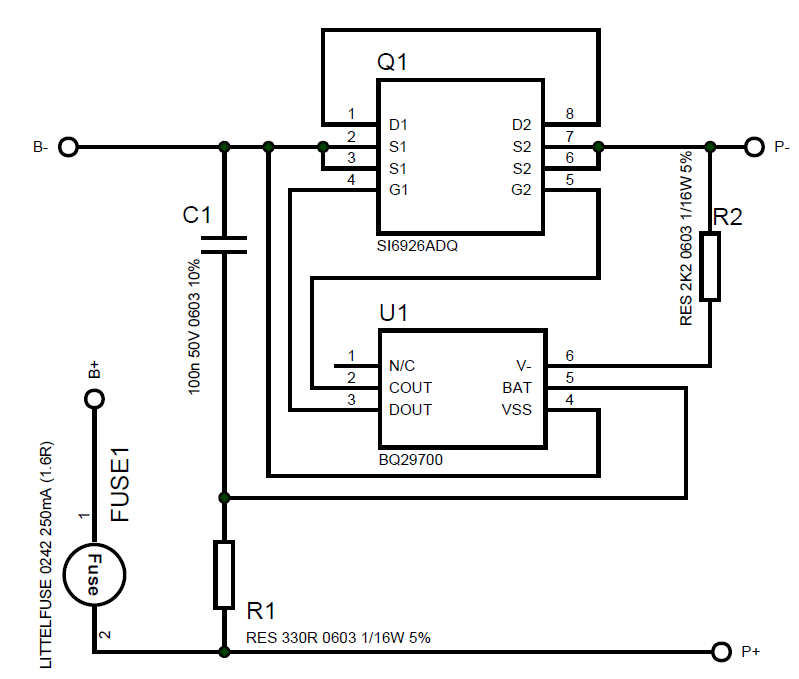I'm having a problem with the BQ29700 IC.
When I first connect the battery, I need to insert the charger in order to properly enable the discharging circuit. I'm ok with that and the datasheet mentions this routine.
After that I can see the voltage between PACK+ and PACK- (3.57V).
I'm testing the short circuit protection, and once I tie "PACK+" to "PACK-" I can see that the DOUT is no longer HIGH and the P+/P- voltage drops to 0.20mV
Here's the problem, the BQ29700 is not recovering from the short circuit protection unless I insert the charger again.
After the short circuit the voltage between VBAT and VSS is 3.57V and the voltage between V- and VSS is 2.54V.
From the datasheet, the recovery will only happen when the diference between VBAT and V- is higher than 1V and even when this condition occur the IC can't release the protection state.
When I put some load between "PACK+" and "PACK-", the voltage between PACK+ and PACK- rush up to VBAT level and quickly return to 0,20V. After that the voltage between P+ and P- became a sawtooth and adding the load just increase the frequency a little bit, but the voltage is never higher than 2V.


